Cover�
Content�
Chapter 1. Essential Networking Concepts�
1.1 Layers�
1.2 Service Models�
1.3 Important Properties of a Network�
1.4 Reliable Data Transfer Protocols�
Homework�
Chapter 2. Data Link Layer Issues�
2.1 Generic LANs�
2.1.1 What Is a LAN?�
2.1.2 Taking Turns�
2.2 IEEE 802 LANs�
2.3 Names, Addresses, Routes�
2.4 LAN Addresses�
2.5 Multicast versus Unicast Addresses�
2.6 The Broadcast Address�
2.7 Multiplexing Field�
2.8 Bit Order�
2.9 Logical Link Control�
2.10 Issues in 802.3�
2.11 Issues in 802.5�
2.12 Packet Bursts�
2.13 Reasons for Bridges�
2.14 Point-to-Point Links�
Homework�
Chapter 3. Transparent Bridges�
3.1 The No-Frills Bridge�
3.2 The Learning Bridge�
3.3 Spanning Tree Algorithm�
3.3.1 Configuration Messages�
3.3.2 Calculation of Root ID and Cost to Root�
3.3.3 Selecting Spanning Tree Ports�
3.3.4 An Example�
3.4 Spanning Tree Algorithm Refinements�
3.4.1 Failures�
3.4.2 Avoiding Temporary Loops�
3.4.3 Station Cache Timeout Values�
3.4.4 Networkwide Parameters�
3.4.5 Port ID�
3.4.6 Assigning Port Numbers�
3.4.7 Performance Issues�
3.4.8 One-way Connectivity�
3.4.9 Settable Parameters�
3.5 Bridge Message Formats�
3.5.1 Configuration Message Format�
3.5.2 Topology change notification format�
3.6 Other Bridge Issues�
3.6.1 Multiply Connected Stations�
3.6.2 Configuration of Filtering�
3.6.3 Not Quite Transparent�
3.7 Remote Bridges�
Homework�
Chapter 4. Source Routing Bridges�
4.1 Pure Source Routing�
4.1.1 The Routing Header�
4.1.2 Bridge Numbers�
4.1.2.1 Internal LAN Number�
4.1.2.2 The Route�
4.1.2.3 Reasons for Parallel Bridges�
4.1.3 Bridge Algorithms�
4.1.3.1 Transparent Packets�
4.1.3.2 Specifically Routed Packets�
4.1.3.3 All Paths Explorer Packets�
4.1.3.4 Spanning Tree Explorer Packets�
4.2 SR-TB Bridges�
4.2.1 Packets from a TB Port�
4.2.2 Packets from an SR Port�
4.2.3 Loops�
4.3 SRT Bridges�
4.4 End-system Algorithms�
4.4.1 When to Find a Route�
4.4.2 How to Find a Route�
4.4.2.1 Route Finding Strategy 1�
4.4.2.2 Route Finding Strategy 2�
4.4.2.3 Route Find Strategy 3�
4.4.2.4 Route Finding Strategy 4�
4.4.2.5 Route Finding Strategy 5�
4.4.2.6 Route Finding Strategy 6�
4.4.3 Route Discovery by the Destination�
4.4.4 Route Selection�
4.5 Source Routing versus Transparent Bridging�
4.5.1 Bandwidth Overhead�
4.5.2 Ease of Configuration�
4.5.3 Universality�
4.5.4 Cost and Performance of Bridges�
4.6 Ideas for Improving Source Route Bridging�
4.6.1 Autoconfiguration with Source Route Bridging�
4.6.2 Fixing the Exponential Overhead�
Homework�
Chapter 5. Hubs, Switches, Virtual LANs, and Fast Ethernet�
5.1 Hubs�
5.1.1 The Learning Hub and Security�
5.1.2 Store-and-Forward and Spanning Tree�
5.1.3 Mixing Layer 1 and 2 Switches�
5.1.4 Products versus Standards, Layer 1 versus Layer 2�
5.2 Faster LANs�
5.3 Virtual LANs (VLANs)�
5.3.1 Why VLANs?�
5.3.2 Mapping Ports to VLANs�
5.3.3 Example: VLAN Forwarding with Separate Router�
5.3.4 Example: VLAN Forwarding with Switch as Router�
5.3.5 Dynamic Binding of Links to VLANs�
5.3.6 Dynamic VLAN Binding, Switch-Switch�
Homework�
Chapter 6. Network Interface: Service Models�
6.1 What Is the Network Layer?�
6.2 Network Service Types�
6.2.1 Performance Guarantees�
6.2.2 Sample Service Model Choices�
6.2.3 Hybrid Schemes�
6.2.4 Connectionless versus Connection-oriented�
Homework�
Chapter 7. Connection-oriented Nets: X.25 and ATM�
7.1 Generic Connection-oriented Network�
7.2 X.25: Reliable Connection-oriented Service�
7.2.1 The Basic Idea�
7.2.2 Virtual Circuit Numbers�
7.2.3 Call Setup�
7.2.4 Data Transfer�
7.2.5 Flow Control�
7.2.6 Facilities�
7.2.7 Call Release�
7.2.8 Interrupts�
7.3 Implementing X.25 Inside the Net�
7.3.1 Circuit Method�
7.3.2 Reliable Connections over Datagrams Method�
7.3.3 Comparison�
7.4 Asynchronous Transfer Mode�
7.4.1 Cell Size�
7.4.2 Virtual Circuits and Virtual Paths�
7.4.3 ATM Service Categories�
7.4.4 ATM Cell Header Format�
7.4.5 Setting Up and Releasing Calls�
7.4.6 ATM Adaptation Layers�
7.4.6.1 AAL1�
7.4.6.2 AAL3/4�
7.4.6.3 AAL5�
Homework�
Chapter 8. Generic Connectionless Service�
8.1 Data Transfer�
8.2 Addresses�
8.3 Hop Count�
8.4 Service Class Information�
8.4.1 Priority�
8.4.2 Bandwidth Reservation and Service Guarantees�
8.4.3 Special Route Computation�
8.5 Network Feedback�
8.6 Fragmentation and Reassembly�
8.7 Maximum Packet Size Discovery�
Homework�
Chapter 9. Network Layer Addresses�
9.1 Hierarchical Addresses with Fixed Boundaries�
9.2 Hierarchical Addresses with Flexible Boundaries�
9.3 Owning versus Renting Addresses�
9.4 Types of Addresses�
9.5 IP�
9.5.1 IP Address Conventions�
9.5.2 Text Representation of IP Addresses�
9.6 IPX�
9.6.1 Privacy Issue with Unique IDs�
9.6.2 Ugly Rumors about IPX�
9.6.3 Administering IPX Addresses�
9.6.4 Internal IPX Network Numbers�
9.7 IPX+�
9.8 IPv6�
9.8.1 The IPv6 Version Number Story�
9.8.2 Written Representation of IPv6 Addresses�
9.8.3 Written Representation of IPv6 Prefixes�
9.8.4 EUI-64�
9.8.5 EUI-64 As Used by IPv6�
9.8.6 IPv6 Address Conventions�
9.8.7 Transition from IPv4 to IPv6�
9.9 CLNP Network Layer Addresses�
9.9.1 Autoconfiguration�
9.9.2 Embedded DTE Addresses�
9.10 AppleTalk Network Layer Addresses�
9.11 DECnet Phases III and IV�
9.11.1 A Bit of History�
9.11.2 DECnet Phase IV Address�
9.11.3 Mapping DECnet Address to Ethernet Address�
9.12 NAT/NAPT�
Homework�
Chapter 10. Connectionless Data Packet Formats�
10.1 Pieces of a Connectionless Network Layer�
10.2 Data Packets�
10.3 Summary of Packet Formats for Easy Reference�
10.3.1 IP�
10.3.2 IPX�
10.3.3 IPX+�
10.3.4 AppleTalk�
10.3.5 IPv6�
10.3.6 DECnet�
10.3.7 CLNP�
10.4 Technical Issues and Comparisons in Data Packet Formats�
10.4.1 Destination Address�
10.4.2 Source Address�
10.4.3 Destination and Source Sockets�
10.4.4 Header Length�
10.4.5 Packet Length�
10.4.6 Header Checksum�
10.4.7 Fragmentation Allowed�
10.4.8 Packet Identifier�
10.4.9 Fragment Offset�
10.4.10 Prefragmentation Length�
10.4.11 More Fragments Follow�
10.4.12 Lifetime�
10.4.13 Version�
10.4.14 Padding�
10.4.15 Protocol�
10.4.16 Type�
10.4.17 Error Report Requested�
10.4.18 Congestion Feedback: Source Quench versus DEC Bit�
10.4.19 Type of Service�
10.4.19.1 TOS Field in IPv4�
10.4.19.2 TOS in CLNP�
10.4.19.3 TOS in IPX, AppleTalk, and DECnet�
10.4.19.4 New Ideas for TOS�
10.4.20 Options�
10.4.20.1 Options in CLNP�
10.4.20.2 Options in IP�
10.5 Source Routing�
10.5.1 Loose versus Strict Source Routing�
10.5.2 Overwriting a Source Route with an Outgoing Link Address�
10.5.3 Overwriting a Destination Address with a Next Source Route�
10.5.4 A Security Flaw with the Source Route Option�
10.6 The Great IPX Frame Format Mystery�
10.6.1 IPX's Four Frame Formats�
10.6.2 Dealing with Multiple IPX Frame Formats�
10.7 Error Reports and Other Network Feedback to the Endnode�
10.7.1 CLNP Error Messages�
10.7.2 ICMP: IP Error Messages�
10.7.3 IPv6 Error Messages�
Homework�
Chapter 11. Neighbor Greeting and Autoconfiguration�
11.1 Endnodes Attached via Point-to-Point Links�
11.2 Endnodes Attached via LANs�
11.2.1 ES-IS: The CLNP Solution�
11.2.2 The IP Solution�
11.2.2.1 IP: Finding Neighbors' Layer 2 Addresses�
11.2.2.2 ARP/RARP Message Format�
11.2.2.3 Redirect Messages�
11.2.2.4 IP: Endnode Autoconfiguration�
11.2.3 The IPX Solution�
11.2.4 The DECnet Solution�
11.2.5 The AppleTalk Solution�
11.2.5.1 Knowing Who Is on Your LAN�
11.2.5.2 Finding a Router�
11.2.5.3 Acquiring an AppleTalk Address�
11.2.5.4 Seed Routers�
11.2.5.5 Some Wrinkles�
11.2.5.6 Finding the Best Router for a Given Destination�
11.2.6 The IPv6 Solution�
11.2.7 Review and Comparisons�
11.2.7.1 Endnodes Acquire a Layer 3 Address�
11.2.7.2 Router Finds Out Layer 3 Addresses of Endnode Neighbors�
11.2.7.3 Router Finds Out Layer 2 Addresses of Endnode Neighbors�
11.2.7.4 Endnodes Find a Router�
11.2.7.5 Endnode Neighbors Send Directly to Each Other�
11.2.7.6 Finding the Best Router�
11.2.7.7 Routerless LAN�
11.2.8 Comparisons�
11.2.8.1 ES-IS versus ARP�
11.3 Endnodes Attached via Nonbroadcast Multiaccess Media�
11.3.1 Various Solutions�
11.3.2 Providing Multicast in the Protocol Y Cloud�
11.3.2.1 Bridging�
11.3.2.2 Multicast in IPX�
11.3.2.3 Multicast in ATM�
11.3.2.4 Multicast in SMDS�
11.3.3 LAN Emulation�
11.3.3.1 Some LANE Jargon�
11.3.3.2 A Client (LEC) Boots Up�
11.3.3.3 Joining an ELAN�
11.3.3.4 Transmitting to Another LEC�
11.3.3.5 Sending a Multicast Packet�
11.3.4 Classical IP and ARP over ATM�
11.3.5 Cutting Out Extra Hops�
11.4 Finding Things�
11.4.1 Finding Services, Generically�
11.4.2 AppleTalk's Scheme�
11.4.3 Service Advertising Protocol for NetWare�
Homework�
Chapter 12. Routing Algorithm Concepts�
12.1 Distance Vector Routing�
12.1.1 Why Not Distance Vector?�
12.1.1.1 Hold-down�
12.1.1.2 Reporting the Entire Path�
12.1.1.3 Split Horizon�
12.1.1.4 Two Metrics�
12.1.1.5 Triggered Updates�
12.1.1.6 Poison Reverse�
12.1.1.7 DUAL�
12.2 Link State Routing�
12.2.1 Meeting Neighbors�
12.2.2 Constructing an LSP�
12.2.3 Disseminating the LSP to All Routers�
12.2.3.1 Timestamps�
12.2.3.2 Sequence Number/Age Schemes�
12.2.3.3 The ARPANET LSP Distribution Scheme�
12.2.3.4 New, Improved LSP Distribution�
12.2.4 Computing Routes�
12.3 Comparison of Link State and Distance Vector Routing�
12.3.1 Memory�
12.3.2 Bandwidth Consumed�
12.3.3 Computation�
12.3.4 A Note about Computation Cost�
12.3.5 Robustness�
12.3.6 Functionality�
12.3.7 Speed of Convergence�
12.4 Load Splitting�
12.5 Link Costs�
12.6 Migrating Routing Algorithms�
12.6.1 Running Both Algorithms�
12.6.2 Manual Node-by-Node Switch�
12.6.3 Translation�
12.7 LANs�
12.7.1 Making the LAN a Node�
12.7.2 Disseminating Routing Information�
12.8 Types of Service�
12.8.1 Handling Directives�
12.8.2 Multiple Metrics�
12.8.3 Policy-based Routing and Policy-based Constraints�
12.8.4 Static Routes�
12.8.5 Filters�
12.8.6 Source Routing�
12.8.7 Routing-domain-specific Policy�
12.8.8 Service-class-specific Policy�
12.9 Partition Repair: Level 1 Subnetwork Partition�
Homework�
Chapter 13. Fast Packet Forwarding�
13.1 Using an Additional Header�
13.2 Address Prefix Matching�
13.3 Longest Prefix Match with Trie�
13.3.1 Collapsing a Long Nonbranching Path�
13.3.2 Trading Memory for Search Time�
13.3.3 Binary Search on Prefix Lengths�
13.3.4 Exploiting Parallelism with Special Hardware�
13.3.4.1 Preparing the Data Structure for the Lookup Engine�
13.3.4.2 Doing a Lookup�
13.3.4.3 Optimizations�
13.4 Binary Search�
13.4.1 Sort the Prefixes�
13.4.2 Add Prefix Length to 1-padded Prefixes�
13.4.3 Get Rid of Duplicate Padded Prefixes�
13.4.4 K-ary Search�
13.4.5 Doing a Lookup�
Homework�
Chapter 14. Specific Routing Protocols�
14.1 A Brief History of Intradomain Routing Protocols�
14.2 RIP�
14.2.1 RIP Version 2�
14.3 RTMP, IPX-RIP, and DECnet�
14.4 IS-IS, OSPF, NLSP, and PNNI�
14.4.1 Hierarchy�
14.4.1.1 IS-IS Hierarchy�
14.4.1.2 NLSP Hierarchy�
14.4.1.3 OSPF Hierarchy�
14.4.1.4 PNNI Hierarchy�
14.4.2 Area Addresses�
14.4.2.1 IS-IS Area Addresses�
14.4.2.2 OSPF Area Addresses�
14.4.2.3 NLSP Area Addresses�
14.4.2.4 PNNI Peer Group Names�
14.4.3 LANs and Designated Routers�
14.4.3.1 IS-IS Designated Router Election�
14.4.3.2 OSPF Designated Router Election�
14.4.3.3 NLSP Designated Router Election�
14.4.3.4 PNNI Peer Group Leader Election�
14.4.4 Reliable Propagation of LSPs on LANs�
14.4.4.1 IS-IS and NLSP Link State Information Propagation�
14.4.4.2 OSPF Link State Information Propagation�
14.4.4.3 Comparison�
14.4.5 Parameter Synchronization�
14.4.5.1 IS-IS Parameter Synchronization�
14.4.5.2 OSPF Parameter Synchronization�
14.4.5.3 PNNI Parameter Synchronization�
14.4.6 Destinations per Packet�
14.4.7 LSP Database Overload�
14.4.7.1 IS-IS Database Overload�
14.4.7.2 OSPF Database Overload�
14.4.7.3 PNNI Database Overload�
14.4.8 Authentication�
14.4.9 IS-IS Details�
14.4.9.1 IS-IS for IP�
14.4.9.2 LAN Designated Router�
14.4.9.3 Big Packets�
14.4.9.4 Partitioned Areas�
14.4.9.5 Partitioned Level 2 Network�
14.4.9.6 Multiarea Bridged LANs�
14.4.9.7 Packets Used by IS-IS�
14.4.10 OSPF�
14.4.10.1 General Packet-encoding Issues�
14.4.10.2 Terminology�
14.4.10.3 Area Partitions�
14.4.10.4 Level 2 Partitions�
14.4.10.5 Finding the Right Level 2 Router�
14.4.10.6 Neighbor Initialization�
14.4.10.7 Types of LSAs�
14.4.10.8 Packet Encoding�
14.4.11 PNNI Details�
14.4.11.1 Path Setup�
14.4.11.2 Area Partitions�
14.5 Interdomain Routing Protocols�
14.5.1 Static Routing�
14.5.2 EGP�
14.5.2.1 Neighbor Acquisition�
14.5.2.2 Neighbor Reachability�
14.5.2.3 Routing Information�
14.5.3 BGP�
14.5.3.1 BGP Neighbors�
14.5.3.2 BGP Attributes�
14.5.3.3 BGP Policies�
14.5.3.4 Confederations�
14.5.3.5 Message Types�
14.5.3.6 Message Formats�
Homework�
Chapter 15. WAN Multicast�
15.1 Introduction�
15.1.1 Layer 2 Multicast�
15.1.2 Reasons for Layer 3 Multicast�
15.1.3 Dimensions to Consider�
15.1.4 Multihop Multicast (other than in IP)�
15.2 Multicast in IP�
15.2.1 Centralized versus Decentralized Multicast�
15.2.2 Could We Do Without Layer 3 Multicast?�
15.2.3 Mapping NL Multicast to DL Multicast�
15.2.4 IGMP Protocol�
15.2.5 IGMP Snooping�
15.2.6 Reverse Path Forwarding�
15.2.7 Distance Vector Multicast Routing Protocol�
15.2.8 Multicast OSPF�
15.2.9 Core-based Trees�
15.2.10 PIM-DM�
15.2.11 PIM-SM�
15.2.12 BGMP/MASC�
15.2.13 Multicast Source Distribution Protocol�
15.2.14 Simplifying Multicast�
15.2.14.1 Creating a Group in Simple Multicast: Choosing C�
15.2.14.2 How Do Endnodes Discover C?�
15.2.14.3 Isn't a Shared Tree Suboptimal?�
15.2.14.4 Single Point of Failure?�
15.2.14.5 Controlling Who Can Send�
15.2.14.6 Policy�
15.2.14.7 Specifying C in Join Messages�
15.2.14.8 Specify Both C and G in Data Messages�
15.2.14.9 Dense-mode Groups�
15.2.14.10 Express�
15.2.14.11 What Is Simpler About Simple Multicast?�
Homework�
Chapter 16. Sabotage-proof Routing�
16.1 The Problem�
16.2 All You Need to Know about Cryptography�
16.3 Overview of the Approach�
16.3.1 Robust Flooding�
16.3.1.1 Summary of Robust Flooding�
16.3.2 Robust Routing�
16.4 Detailed Description of the Approach�
16.4.1 Robust Flooding Revisited�
16.4.1.1 A Priori Information�
16.4.1.2 Dynamic Database�
16.4.1.3 Dealing with Multiple Public Key Distributors�
16.4.1.4 Packets�
16.4.1.5 Distribution of Public Key List Packets�
16.4.1.6 Distribution of LSPs�
16.4.1.7 Receipt of Acks�
16.4.1.8 Running Out of Sequence Number�
16.4.2 Robust Data Routing�
16.4.3 Additional Dynamic Database�
16.4.3.1 Additional Packets�
16.4.3.2 Receipt of Route-setup Packets�
16.4.3.3 Receipt of Data Packets�
16.4.3.4 Nonfunctioning Routes�
16.5 Summary�
16.6 For Further Reading�
Homework�
Chapter 17. To Route, Bridge, or Switch: Is That the Question?�
17.1 Switches�
17.2 Bridges versus Routers�
17.3 Extensions to Bridges�
17.3.1 Using More Than the Spanning Tree�
17.3.2 Fragmenting Bridges�
17.3.3 IGMP Snooping�
17.4 Extensions to Routers�
17.4.1 Faster Routers�
17.4.2 Multiprotocol Routers�
17.4.3 Single-protocol Backbone�
17.4.4 Brouters�
Chapter 18. Protocol Design Folklore�
18.1 Simplicity versus Flexibility versus Optimality�
18.2 Knowing the Problem You're Trying to Solve�
18.3 Overhead and Scaling�
18.4 Operation Above Capacity�
18.5 Compact IDs versus Object Identifiers�
18.6 Optimizing for the Most Common or Important Case�
18.7 Forward Compatibility�
18.7.1 Large Enough Fields�
18.7.2 Independence of Layers�
18.7.3 Reserved Fields�
18.7.4 Single Version-number Field�
18.7.5 Split Version-number Field�
18.7.6 Options�
18.8 Migration: Routing Algorithms and Addressing�
18.9 Parameters�
18.9.1 Avoiding Parameters�
18.9.2 Legal Parameter Setting�
18.9.2.1 "Report My Values" Method�
18.9.2.2 "Detect Misconfiguration" Method�
18.9.2.3 "Use My Parameters" Method�
18.10 Making Multiprotocol Operation Possible�
18.11 Running over Layer 3 versus Layer 2�
18.12 Robustness�
18.13 Determinism versus Stability�
18.14 Performance for Correctness�
18.15 In Closing�
Appendix Glossary�
Glossary�
About the Author�
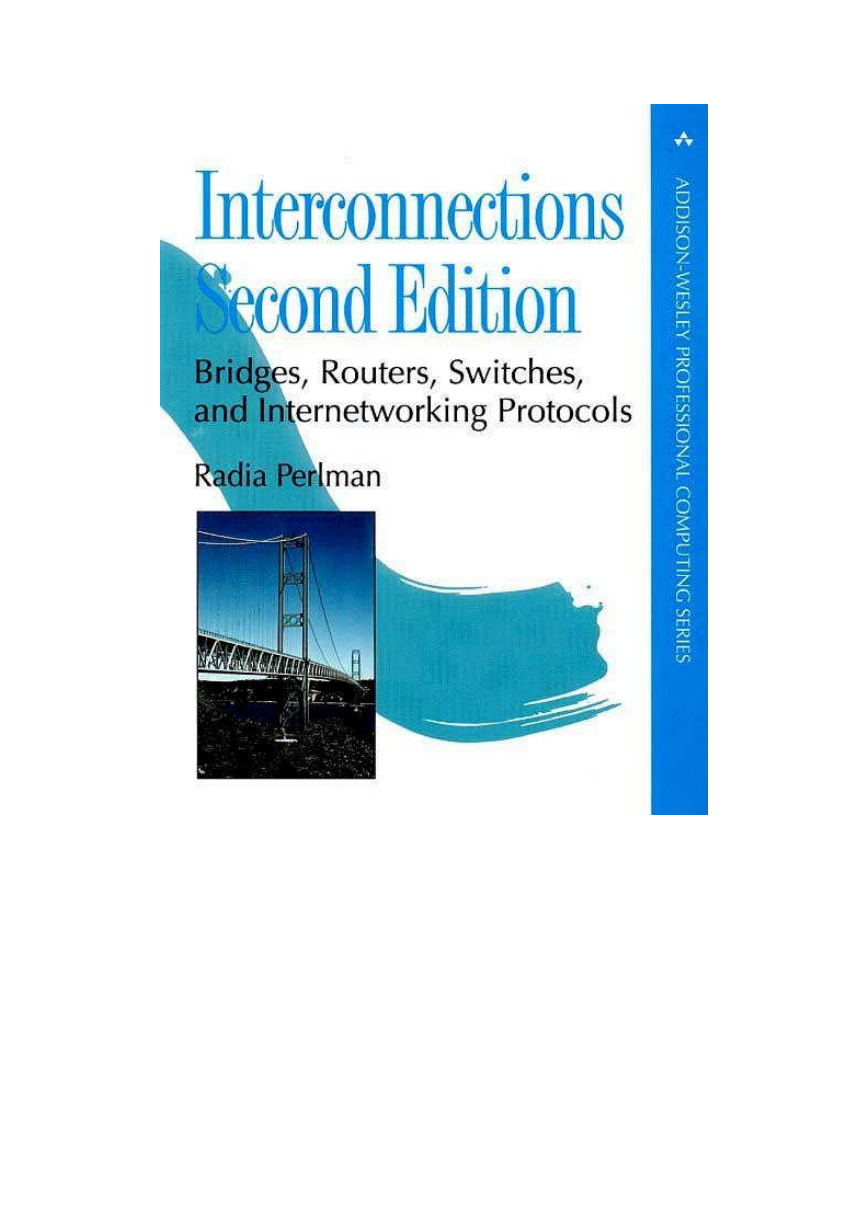

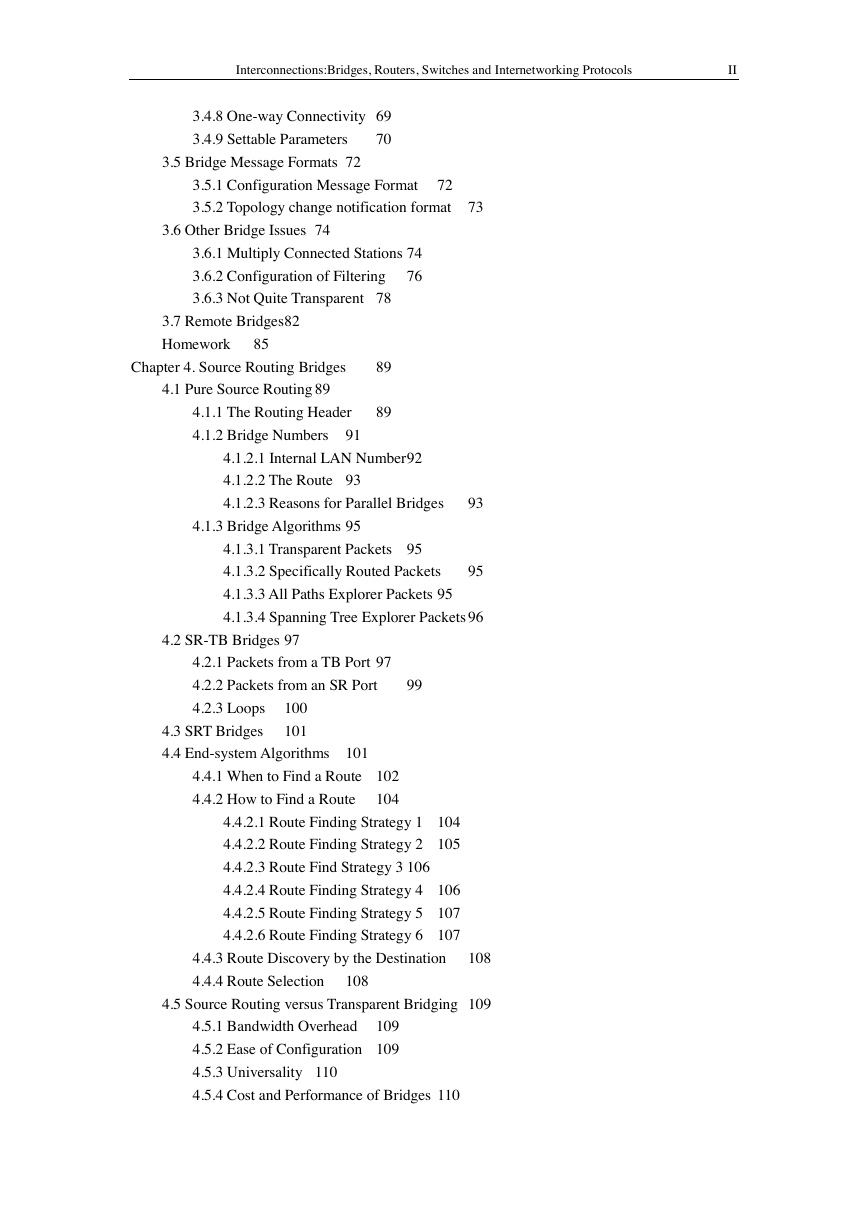

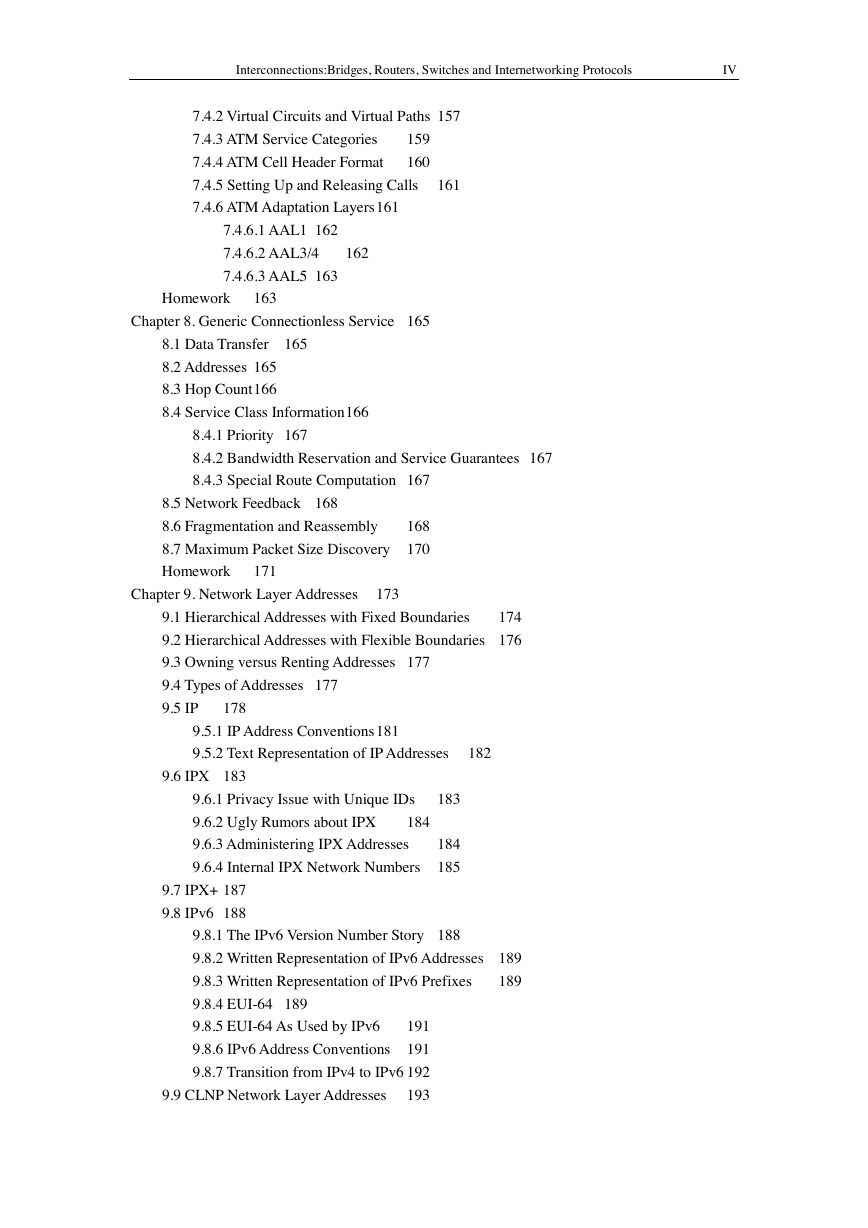

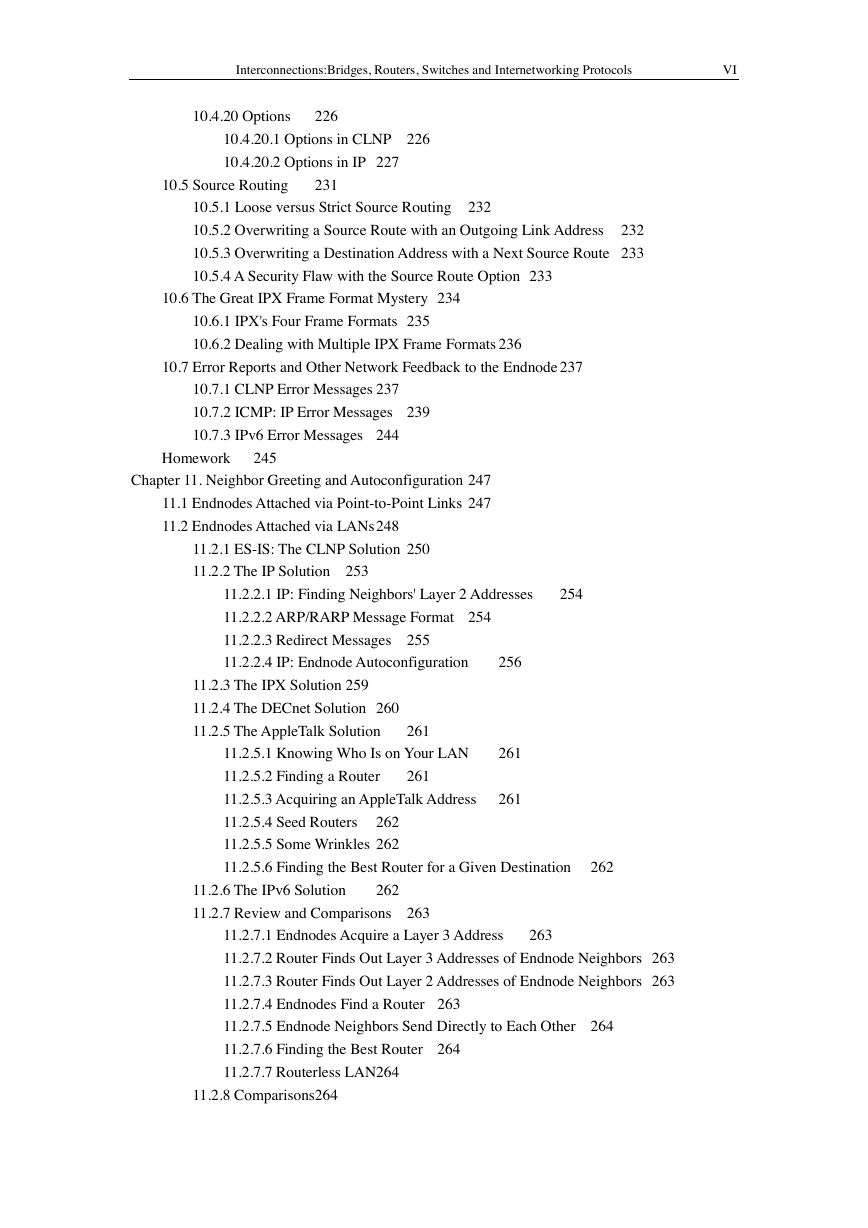
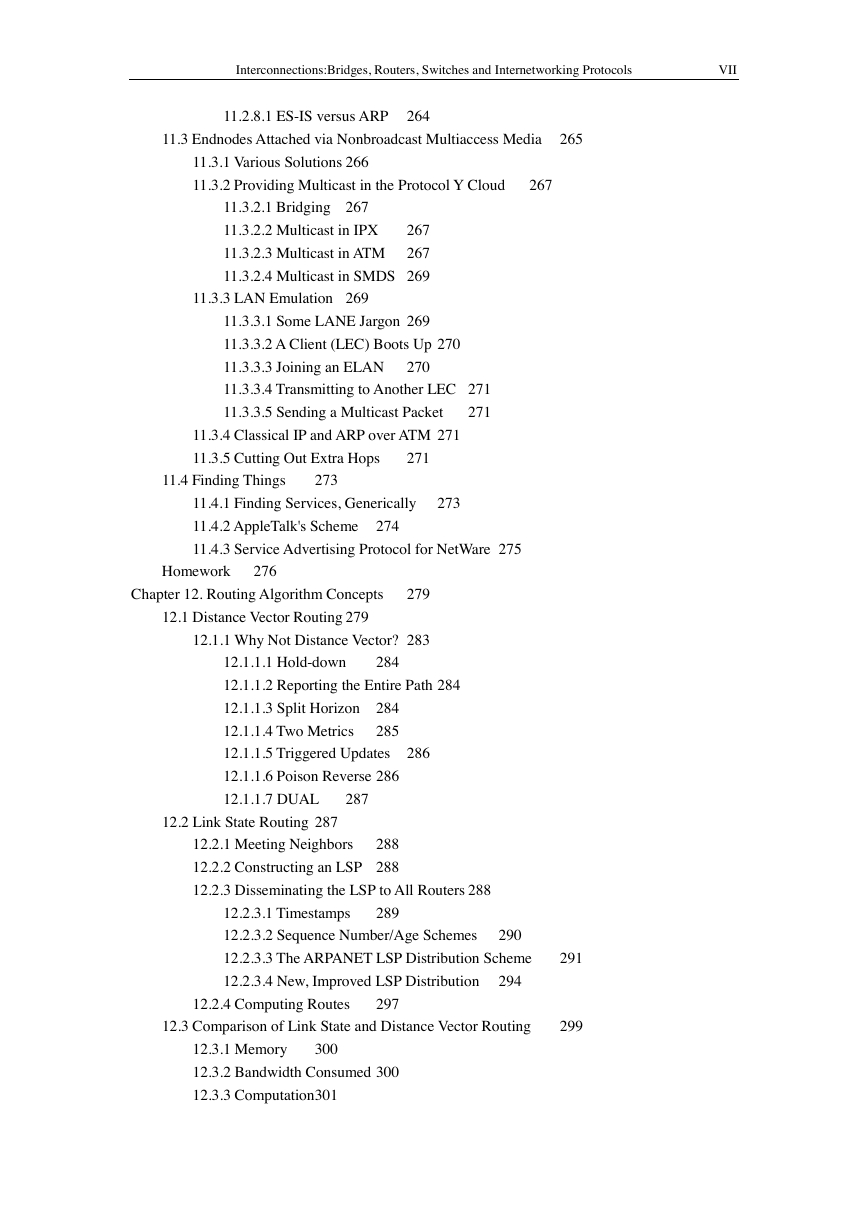








 2023年江西萍乡中考道德与法治真题及答案.doc
2023年江西萍乡中考道德与法治真题及答案.doc 2012年重庆南川中考生物真题及答案.doc
2012年重庆南川中考生物真题及答案.doc 2013年江西师范大学地理学综合及文艺理论基础考研真题.doc
2013年江西师范大学地理学综合及文艺理论基础考研真题.doc 2020年四川甘孜小升初语文真题及答案I卷.doc
2020年四川甘孜小升初语文真题及答案I卷.doc 2020年注册岩土工程师专业基础考试真题及答案.doc
2020年注册岩土工程师专业基础考试真题及答案.doc 2023-2024学年福建省厦门市九年级上学期数学月考试题及答案.doc
2023-2024学年福建省厦门市九年级上学期数学月考试题及答案.doc 2021-2022学年辽宁省沈阳市大东区九年级上学期语文期末试题及答案.doc
2021-2022学年辽宁省沈阳市大东区九年级上学期语文期末试题及答案.doc 2022-2023学年北京东城区初三第一学期物理期末试卷及答案.doc
2022-2023学年北京东城区初三第一学期物理期末试卷及答案.doc 2018上半年江西教师资格初中地理学科知识与教学能力真题及答案.doc
2018上半年江西教师资格初中地理学科知识与教学能力真题及答案.doc 2012年河北国家公务员申论考试真题及答案-省级.doc
2012年河北国家公务员申论考试真题及答案-省级.doc 2020-2021学年江苏省扬州市江都区邵樊片九年级上学期数学第一次质量检测试题及答案.doc
2020-2021学年江苏省扬州市江都区邵樊片九年级上学期数学第一次质量检测试题及答案.doc 2022下半年黑龙江教师资格证中学综合素质真题及答案.doc
2022下半年黑龙江教师资格证中学综合素质真题及答案.doc